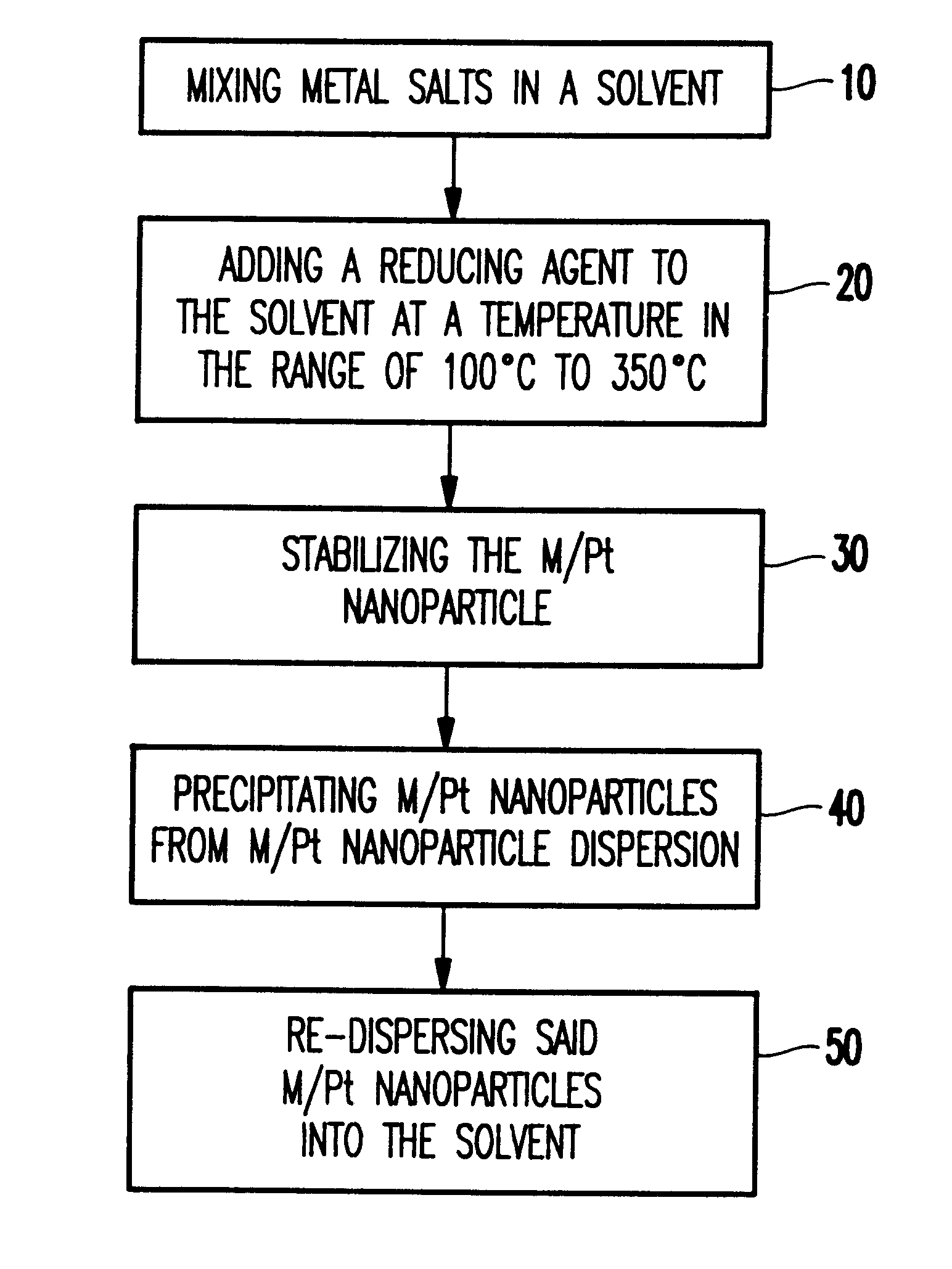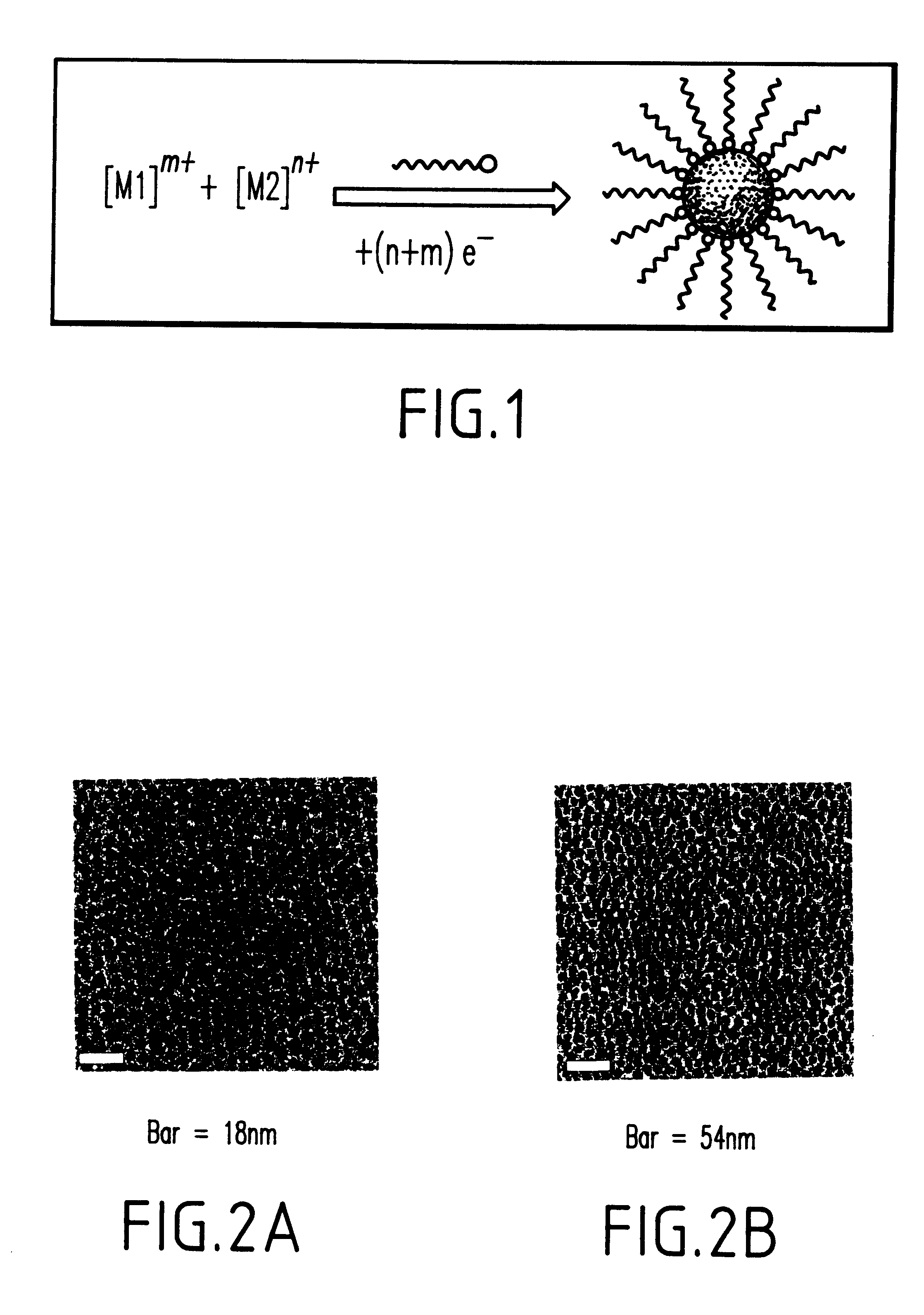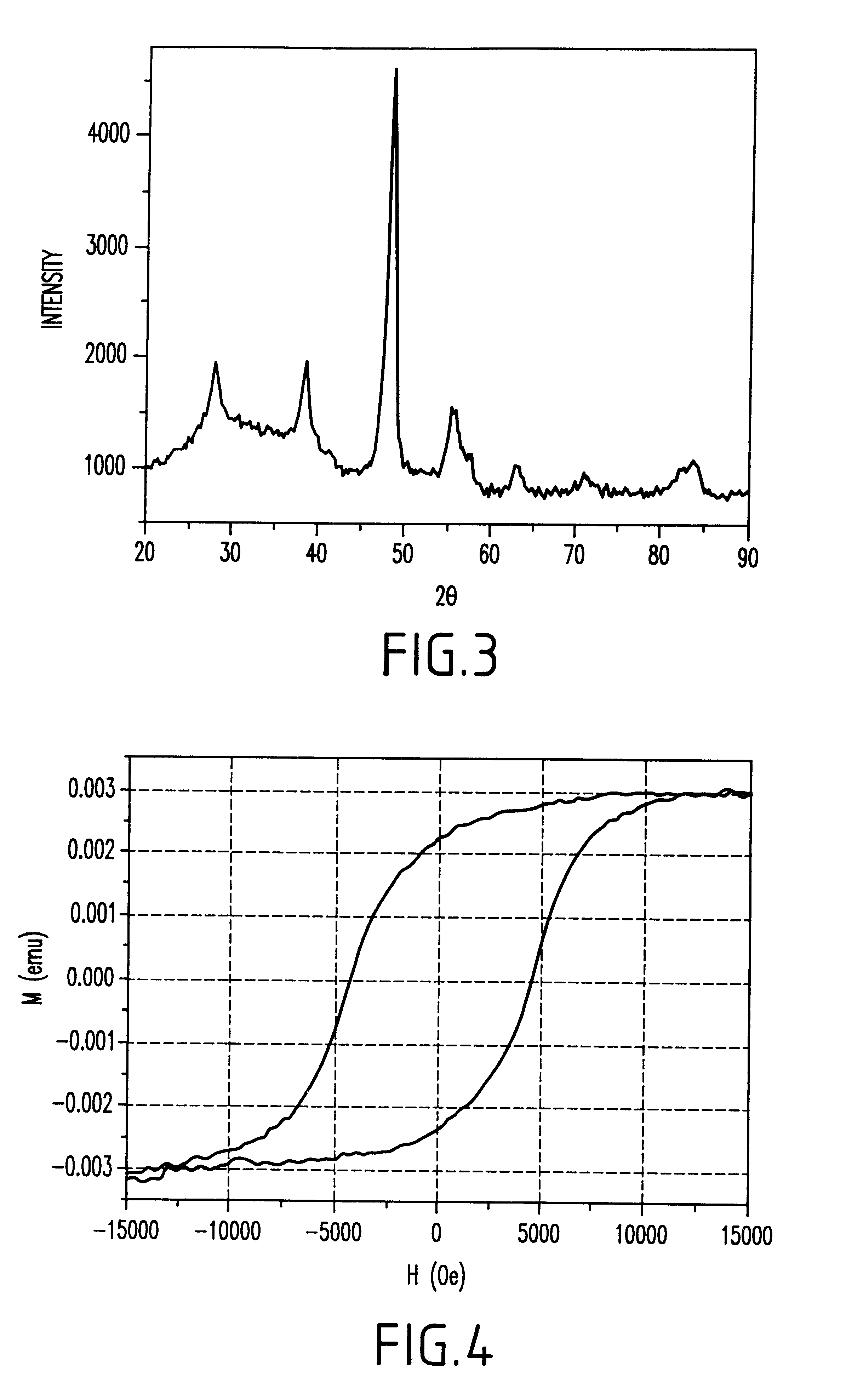Metal salt reduction to form alloy nanoparticles
a technology of alloy nanoparticles and metal salts, which is applied in the field of metal salt reduction to form alloy nanoparticle materials, can solve the problems of dramatic noise increase of recording signals, large distribution of as-deposited grain size, and inability to control the agglomeration of post-annealed magnetic grains,
- Summary
- Abstract
- Description
- Claims
- Application Information
AI Technical Summary
Benefits of technology
Problems solved by technology
Method used
Image
Examples
Embodiment Construction
As previously mentioned, there is a need to make nanoparticles and nanocrystalline thin films with controlled particles sizes and coercivity. As such, this invention extends the decomposition / reduction chemistry by using reduction chemistry to make monodisperse M / Pt nanoparticles and nanocrystalline thin films with control over particle size (less than 10 nm) and coercivity (up to 1.5 Tesla).
This invention covers a further synthetic improvement to previous FePt nanoparticle synthesis and assembly. The present invention relates to the chemical reduction of metal salts to form M / Pt, (M=Fe, Co) alloy nanoparticle materials with control of particle size (less than 10 nm) and composition. Thermal annealing is applied to convert the internal particle structure from a chemically disordered fcc (face-centered cubic) to a chemically ordered fct (face-centered tetragonal) phase. The magnetic properties of the nanoparticle assemblies can be tuned from superparamagnetic to ferromagnetic with co...
PUM
| Property | Measurement | Unit |
|---|---|---|
| temperature | aaaaa | aaaaa |
| temperature | aaaaa | aaaaa |
| temperature | aaaaa | aaaaa |
Abstract
Description
Claims
Application Information
 Login to View More
Login to View More - R&D
- Intellectual Property
- Life Sciences
- Materials
- Tech Scout
- Unparalleled Data Quality
- Higher Quality Content
- 60% Fewer Hallucinations
Browse by: Latest US Patents, China's latest patents, Technical Efficacy Thesaurus, Application Domain, Technology Topic, Popular Technical Reports.
© 2025 PatSnap. All rights reserved.Legal|Privacy policy|Modern Slavery Act Transparency Statement|Sitemap|About US| Contact US: help@patsnap.com



